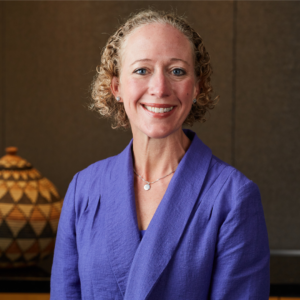New Interpretive Guidance for quality of life, environment tags
The Center for Medicare & Medicaid Services (CMS) released new Interpretive Guidance for several quality of life and environment tags on April 10. These changes grew from the “Creating Home” national symposium cosponsored by CMS and the Pioneer Network in April 2008. At this national symposium, many changes to the interpretive guidelines were identified by stakeholders. CMS has taken these recommendations seriously and changed the interpretive guidelines. Hopefully, changes to regulations will be made by CMS as well. Here is a rundown of the most recent CMS Interpretive Guidance changes.
F172 Access and Visitation Rights-Visitors must have 24-hour access to residents with “reasonable restrictions” defined as anyone who might affect the security of all residents.
F175 Married Couples-A resident may choose to room with another nursing home resident of his or her choice.
F241 Dignity-We still have many undignified practices in the more typical nursing homes. Therefore, CMS has added examples to the interpretive guidelines including:
Eliminating such practices as using bibs (also known as clothing protectors) and instead offering cloth napkins
Having staff sit rather than stand when helping residents to eat
Identifying that staff should be interacting/conversing with residents rather than with each other while assisting residents
Speaking to residents respectfully; avoiding use of labels for residents such as “feeders”
Grooming residents as they wish to be groomed; cleaning residents’ faces, hands, and clothing after they are soiled
At the 2008 Pioneer Network Conference, Past President Sue Misorski challenged us to think about what a dignified existence means. As she said, what residents want more than anything else is to get to the bathroom when they need to. This is such a basic human right. I know we can get this handled.
CMS refers to toileting again in an example of undignified care of refusing to comply with a resident’s request for toileting assistance during mealtimes, and restricting residents from use of common areas open to the general public such as lobbies and restrooms. It is dehumanizing to restrict residents from using restrooms, closer to where they dine, which are open to the public but not to residents. Huh? I can recall when African-Americans could not use restrooms open to the public. Is this what we want for our elders?
F242 Self-Determination and Participation-Many of us refer to this regulation as “choices” because it states that the resident has the right to … make choices (emphasis added) about aspects of his or her life in the facility that are significant to the resident. What is new is identifying that this includes actively seeking information from the resident regarding significant interests and preferences in order to provide necessary assistance to help residents fulfill their choices over their lives. Wow, actively seeking is definitely new. Also new are these fabulous changes:
Residents have the right to have a choice over their schedules, consistent with their interests and assessments. Choice over “schedules” includes daily waking, eating, bathing, and going to bed at night. Residents have the right to choose healthcare schedules consistent with their interests and preferences, and the home should gather this information in order to be proactive in assisting residents to fulfill their choices.
In addition, during resident and family interviews, surveyors are to determine what time the resident awakens and goes to sleep, and whether this is the resident’s preferred time. They will also determine whether the facility is honoring the resident’s preferences regarding the timing (morning, afternoon, evening, and how many times a week) for bathing and also the method (shower, bath, in-bed bathing). They will obtain further information as necessary from observations and staff interviews. If the resident is unaware of the right to make such choices, determine whether the home has actively sought information from the resident and/or family (for a resident unable to express choices) regarding preferences and whether these choices were relayed to caregivers. This is your opportunity to lead in honoring resident preferences.
F246 Accommodation of Needs-CMS now states this requirement refers to the resident’s physical environment and added requirements for adaptations to bedrooms and bathrooms to ensure each resident can (if they are able) open and close drawers (special drawer pulls) and bedroom and bathroom doors (push/pull handles), turn faucets on and off (lever handles), and see her/himself in a mirror (tilt mirrors). Residents should be able to rise from living room furniture including different sizes and types of furniture with appropriate seat height, depth, firmness, and arms that assist residents into a standing position. It is time to individualize physical surroundings just as you do in your home. In addition, CMS wisely adds here that reasonably sufficient electric outlets should be provided to accommodate the resident’s need to safely use her/his electronic personal items. It is important to recognize that residents will be bringing more and more items that need to be plugged in to their new home.
F247 Receive notice before the resident’s room or roommate is changed-There is recognition that residents, like the rest of us, develop relationships with those with whom they live. Therefore, new language has been added about being sensitive to the trauma a move or change of roommate may cause. This suggests learning resident preferences, explaining moves initiated by the facility, and giving as much information about a new roommate as possible without violating confidentiality. Also added is supporting a resident whose roommate has passed away by providing a little time to adjust (a couple days if possible) before moving another person into the room if the resident wishes. Social services should be involved as needed to make this transition less traumatic for residents.
F252 Safe, clean, comfortable, and homelike environment-This regulation de-emphasizes the institutional character of the setting. CMS now lists some good practices to decrease institutional character such as eliminating:
Overhead paging and piped-in music throughout the building
Meal service in the dining room using trays
Institutional signage labeling workrooms/closets
Medication carts
The widespread and long-term use of audible chair and bed alarms
Mass-purchased furniture, drapes, and bedspreads that all look alike
Large, centrally located nursing stations
Amazingly, CMS then goes on to state that a “homelike environment” is not only the physical environment but concerns striving for person-centered care that emphasizes individualization and relationships. CMS also recognizes that not all homes can make these changes immediately and that having some of the institutional features does not equate with noncompliance but does state that it should be a goal for all homes to work toward these types of changes and each home is expected to do all it can within fiscal constraints to provide an environment that enhances quality of life for residents.
In addition, CMS recognizes short-stay residents may feel differently, identifying that they may not wish to personalize their rooms nor bring in many belongings. However, CMS points out that in a home in which most residents come for a short-term stay, the “good practices” listed in this section are just as important as in a home with a majority of long-term care residents.
F256 Adequate, comfortable lighting levels in all areas-This tag is not new but now gives better guidance regarding adequate lighting features:
Sufficient lighting with minimum glare
Even light levels in common areas and hallways
Use of daylight as much as possible
Elimination of high levels of glare produced by shiny flooring and from unshielded window openings, even mentioning no-shine floor waxes and light filtering curtains that help alleviate glare
Extra lighting such as table and floor lamps
Nighttime wayfinding lighting to find the way from bed to bathroom
Dimming switches, flashlights or pen lights so staff can tend to a resident at night without disturbing them or a roommate.
Within the Procedures section, surveyors are instructed to interview and observe residents for such things as wearing sunglasses or visors indoors, squinting or shading their eyes because of glare, and difficulty seeing food on their plate. These are things you can certainly watch for and probably already know about your residents.
F461 Environment-This tag requires several things and has always included individual closet space in the resident’s bedroom with clothes racks and shelves accessible to the resident. Now added is the requirement from the former (and now deleted) Tag 255: Private closet space in each resident room. Added to the Interpretive Guidelines are the words in italics: “Clothes racks and shelves accessible to the resident” means that residents can get to and reach their hanging clothing whenever they choose. What a great opportunity to make racks and shelves accessible with spring rods from your local hardware or home store.
F463 Resident Call System-It is exciting that the Interpretive Guidance states there may be no traditional nurses’ stations referring instead to decentralized nurse/care team work areas and to other electronic systems that provide direct communication from the resident to the caregivers. It also wisely identifies they need to be functioning and staff need to be answering resident calls. This is where culture change meets regulations at its best.
Our future
As nurses you were educated and trained often in acute care settings. Perhaps some of you have not thought deeply about why nursing “homes” are more like an acute care setting than a home. Traditionally, nursing homes have had the look and feel of a hospital, although residents may live there over long periods of time. You got into this work because you care about people; thus I’m guessing you are thrilled to have regulatory support for these dignified practices and resident choices. You have such power; more than you know. You can call the kitchen and say, “Hold breakfast for Carmen. She’s not awake yet.” And if you did get any guff for it, you can now say, “Haven’t you heard about the new CMS Interpretive Guidance?” Hopefully you won’t have to. This is a call for all of us to think deeply about how we want to be treated as we age and our right to a dignified existence.
To send your comments to the editor, e-mail mhrehocik@iadvanceseniorcare.com.
Related Articles
Topics: Articles , Facility management , Regulatory Compliance











